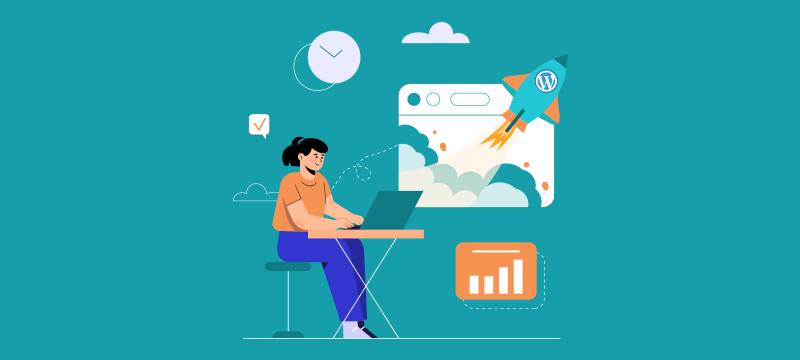Is your goal to boost your core web vitals on WordPress? Well, we’ve got you covered.
Google has brought forth Core Web Vitals to assist website owners in making the experience of users better and improving their website’s quality. These elements are the cornerstone of ensuring your website keeps succeeding. Keep reading to find out how to improve Google core web vitals for WordPress even if you’re not tech-savvy.
Largest Contentful Paint
LCP is a calculation of the speed with which the largest chunk of content immediately appears on the path of the website that users first see when they access your website. To help you understand it further, paint means the appearance of various things such as images, videos or different kinds of texts on the screen. LCP helps gain better insight from the user’s point of view of the loading speed. If your website has a great loading time, but the largest piece of content is slow to appear to your users, your website will still be tagged as slow. 2.5 seconds is the optimum loading time of your largest element, so you need to take measures to make your LCP faster.
- First Input Delay FID is the calculation of the initial impression a user has of your website. It does not mean the speed of your page losing, but instead the pace at which there can be an interaction between the user and your website. The initial impression of the user is measured by the core web vital with the asking of time it takes for your page to respond to the command given. The interaction could refer to various instances such as when the user clicks a button or a link or tries to fill a form.
It calculated the time it takes for the user to be able to click the link. For instance, if the user has completed the form and it takes a long time for the loading of your next page, a delay caused by your busy browser focused on loading something else on your web page, results in a high FID. It is extremely annoying for the user to wait once they have filled in all of the information and just want to get the process done by moving on to the next page. To optimise your user experience, ensure that your first input delay is substantially lower than 100 milliseconds. - Clear Out the Clutter As time goes on, clutter starts to pile on even the most optimally maintained WordPress website. Plugins that are no longer in use, a database that is congested, a theme that is overflowing with features that go completely unused, these things fly under the radar. It could have detrimental effects on your core web vitals. That is why it is imperative that you get rid of the junk that gets collected regularly. You can do the optimisation of your database on your own manually, or you can use an automated system to do it for you. You can deactivate it and delete plugins that remain unused. Themes can be replaced with ones that only include aspects that are useful and beneficial for your website. Take stock of what is hampering the speed of your website and take care of it. You will be amazed at the difference in the functioning of your website.
- Optimize Your WordPress Hosting The most vital aspect of the performance of your website is your managed WordPress hosting services. There are many elements that can help you boost the performance of your website that fall under the technical and non-technical side, but the hosting makes the biggest difference as your optimization techniques will not work otherwise. Growing your business should be your primary focus. You shouldn’t have to rate your thing on server issues. Choosing a well-managed WordPress hosting service will help save time, effort and boost your performance. Plus the best-managed WordPress hosting services come along with better security, faster speed and server-side caching.
- Optimize Images Performance optimization is hampered when people opt for huge images and complicated sliders. These might be playing to the eye but could end up eating huge amounts of data. That’s going to be detrimental for your core web vitals, especially on devices like the mobile. Fortunately, there are a few ways to help make this better. To begin with, any image that is not of any particular importance has to go. If you get rid of even one big image, it makes a world of difference. You can optimize the remaining images on your website. It will help decrease the size and reduce their load time impact.
Conclusion
User experience and boosting your speed has always been the most important aspect of improving your core web vitals on WordPress. Choosing a well managed WordPress hosting service can take you a long way in optimizing your website. Apply the measures we have given above and watch your website soar.
